"My Garden Blues" - a photographic guide
By Martin Kalaher
In late April this year Mary and I spent a few days in the Algarve and since I wasn’t having much luck spotting raptors I switched my allegiance and decided to focus on butterflies instead. Despite the abundance of wonderful wildflower meadows there were surprisingly few butterflies, although with much searching I did manage to find quite a nice variety of species. I took a pocket-guide, butterfly ID book but when it came to identifying a species that I had not seen before I found it a bit frustrating as the single photograph on offer wasn’t always that helpful. This got me thinking about the value of multiple images showing both open and closed wings and since I am lucky enough to have breeding colonies of Common Blue, Holly Blue and Brown Argus in the garden, I thought a photographic comparison between these three species might be of some interest.
One of the advantages of having a wildlife garden is that I quite often come across freshly-emerged butterflies which have not fully dried out and these make ideal subjects as they are reluctant/unable to fly. Although this article is primarily intended as a photographic guide I will include some general background points for these three species and some personal observations regarding their behavioural characteristics.
Male Common Blue
By far the commonest of the British blues this species can be found on more-or-less any warm patch of unfertilised grassland, and can be very abundant in wild flower meadows and flower-rich downland. With a well-established wildflower meadow in the garden, male Common Blues are very regular without being numerous and I am lucky to achieve double figures in a single count.
These lovely lilac-blue butterflies are always on the move, darting around the meadow searching for freshly-emerged females. With the meadow measuring just 17m x14m there is a certain inevitability that one male will fly over another and this frequently sets off a tussle between the two. This constant battling between rivals may be the trigger for some to leave their emergence-meadow and look for females elsewhere? Whatever the reason it is apparent that a small percentage of males have a wanderlust and can be found in gardens many miles from the nearest breeding colony.
Not infrequently a male will leave my garden meadow and fly across the lawn, only to turn around and fly back again. Occasionally, however, it will continue its wanderings and leave the garden altogether, sometimes flying over shrubbery which is 30 feet high. So, they are not always ground-huggers.
In flight, it is not that easy to differentiate between male Common Blues and Holly Blues. This is especially true for the female Holly Blue which has a rather more relaxed, languid flight compared to the very rapid, jinxing flight of the male. At rest the male Common Blue is readily identified with its uniform lilac-blue on the upper surface and a clear white outer fringe, which lacks the dark lines or chequered pattern of Adonis and Chalkhill Blues. When the wings are folded the underside of Common blue is edged with orange lunules, whilst Holly Blue has fine black markings set against a pale silver-blue background.
Female Common Blue
Some female Common Blues are mostly brown, some mostly blue and some a complex mixture of colours quite unlike any other British species. To add to the possible confusion the upper-wings of all-brown female Common Blues and Brown Argus are very similar, although female Common Blues will always have some blue scales on the upper surface of the wings.
Some of the blue females can be quite beautiful but the complexities of their colours can only be fully appreciated with photographic enlargement. No female Common blue is ever 100% blue and there is always some brown on the upper wings, even if it is just a narrow strip around the outer margins.
Male Holly Blue
This is a woodland species which may be found in sheltered sunny glades and mature hedgerows, but it is also regularly seen in gardens that are well-stocked with shrubs and trees. In the spring the males are very active, flitting around the tops of mature shrubs, regularly getting into dog-fights with each other.
In my garden where both Holly Blue and Common Blue are relatively common there is usually little overlap in their territorial flights for 99% of the time Common Blues fly low over the meadow and 99% of the time Holly blue fly high up in the shrubbery and generally avoid flying across open spaces. As always there are exceptions and on one occasion in 2017 a blue butterfly flew right across the meadow about six feet off the ground and I assumed it was a Common Blue only to be proven wrong when it landed in the hedgerow by the garden pond. When perched identification is straightforward enough, for with closed wings the silver, black-spotted underwings cannot be confused with any other British species, other than Small Blue (and quite apart from the obvious size difference there are relatively few localities in Sussex where these two species may be found in close juxtaposition).
Female Holly Blue
The host-plant chosen by first generation females for egg-laying is usually Holly, whilst in mid-summer Ivy is chosen, although not exclusively so, with many other shrubs such as Spindle, Dogwood and Portuguese Laurel also used. In my garden we have plenty of all the above, so it’s no surprise that this species is regularly seen in the garden and in good numbers. Holly Blue caterpillars are attacked by two species of parasitic wasps and consequently there are fluctuating fortunes for this species with numbers building up, only to crash every four to six years. Interestingly, in my garden I have not observed an obvious crash in the past 10 years and I regularly have counts of 4-6 in the spring/early summer.
At rest Holly Blues keep their wings folded but on cool, cloudy days they may partially open their wings, when the broad black margins of the upper wings of the female can be seen. These dark markings are more pronounced in the second generation.
Holly Blue feeding on a variety of shrubs and flower heads
Holly Blue mostly feed on honeydew but over the years I have seen (and occasionally photographed) this species feeding on about a dozen different flowering shrubs and flower-heads.
Male Brown Argus
The male Brown Argus adopts a "perch and wait" strategy, patiently waiting for a female to come to him before pursuing her at electric speed. In my meadow, it chooses an area where the sward is short, and the grass rarely grows above 15 inches high. It perches prominently on a grass head, often holding its wings wide open. It is a pugnacious little butterfly and will readily launch itself at anything that comes too close, regardless of the size of the intruder. It has a very fast flight and when the sun is shining there is a silver ‘flash’, which is caused by light reflecting off the under-wings.
The background colour of a fresh Brown Argus is a dark-chocolate brown, which is very uniform across all four wings. The male possesses four distinct orange lunules on the forewing with the fifth and sixth usually faded and difficult to see, although occasionally all six orange lunules are well demarcated as shown in the last photograph above. The thorax and abdomen are narrow throughout their length with the tip extending to the rear of the hindwings and sometimes slightly beyond.
Female Brown Argus
The female Brown Argus also delivers a silvery flash in flight but unless inadvertently disturbed (when it may fly away at great speed) it behaves quite differently to the male. Once mated it has a "retiring habit", spending most of its life in the meadow undergrowth, gradually depositing its precious cargo of eggs. It is remarkably well camouflaged when deep down in the meadow and may be difficult to spot but it does show itself occasionally when nectaring on a prominent flower head.
The upper-wings of both sexes are very similar, but females do have six prominent orange lunules on the forewing and the black lines across the white outer fringe can be quite prominent. The abdomen is much more rounded, and the pointed tip reaches the edge of the orange lunules but no further.
Brown Argus vs all-brown female Common Blue
By rights, separating these two species ought to be straightforward as the Brown Argus is a tiny butterfly, approximately two-thirds the size of Common Blue. Unfortunately for a size comparison to be meaningful the two species need to be perched close to one another, and that doesn’t seem to happen very often. Observing territorial behaviour is very helpful for if that little brown butterfly that looks like a Brown Argus chases every other butterfly that comes nearby, then it almost certainly is a male Brown Argus.
For those of us who regularly participate in butterfly surveys distinguishing between these two species isn’t necessarily very difficult "in the field" with problems more likely to arise when we only have photographs to look at! I will list what I think are the main diagnostic features that differentiates between these two species, beginning with the upper surface and then looking at the underwings, when it becomes a whole lot easier.
Brown Argus:
The upperside of Brown Argus when freshly-emerged is a uniform, dark chocolate-brown against which the orange lunules stand out like beacons. In the female there are six very bold, orange lunules on the forewing. The male also has six orange lunules on the forewing (that are slightly less bold), with the 5th and 6th lunules towards the apex usually faded. This is very variable, and some males have six well demarcated orange lunules.
Both sexes possess a very distinctive dark spot in the middle of the forewings.
There can be a lot of dark blue in the thorax and abdomen of both sexes (although it is generally more obvious in the male) and depending on the tilt of the wings and the angle of the sun there can be a very pronounced blue flare which envelops the inner half of the upperwings.
The male abdomen is narrow and long and extends to the tip of the hindwing, or slightly beyond. In the female the abdomen is noticeably rounder and shorter, with the pointed tip not usually extending beyond the orange lunules of the hindwing.
All-brown female Common Blue:
The background colour of the upperside of all-brown Female Common Blue is generally lighter compared to the dark-chocolate brown of Brown Argus and there are always some blue scales on the upper surface even if they are confined to the wing bases. There are six lunules in the forewing but even in the freshest of individuals these lunules are rarely very bold and the orange is usually restricted to the first four lunules.
Some possess a dark dot in the middle of the forewings but rarely is it a very distinctive feature.
The female abdomen is also round and relatively short which in truth is not too dissimilar to female Brown Argus.
Brown Argus with closed wings
Brown Argus and "all-brown" female Common Blues can look remarkably similar but fortunately a side view differentiates between the two species very readily. Firstly, if one examines the forewing of a Brown Argus, there are no spots on the inner half closest to the body, whereas female Common Blues always have a spot or two on this inner half. Secondly, if the wings are tightly closed and the forewing is covered by the hindwing one can see a "colon" or "figure of eight" formed by two black spots situated mid-way on the upper edge of the hind wing.
All photographs by Martin Kalaher



-1682330458.jpg)
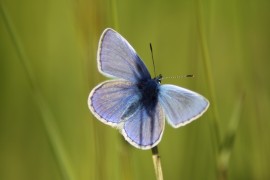
-724883913.jpg)
-5626788730.jpg)
-864753229.jpg)
-3378919470.jpg)
-5454186410.jpg)
-1879231110.jpg)
-440766126.jpg)
-2723181620.jpg)
-9162866459.jpg)
-4348050099.jpg)
-9802049696.jpg)
-3311971267.jpg)
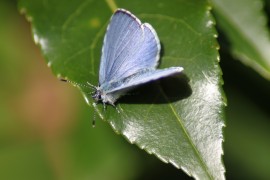
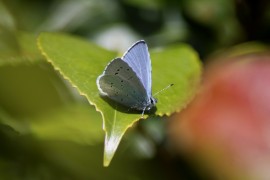
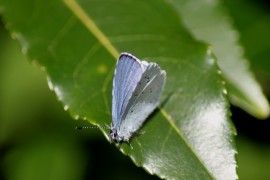
-4928388022.jpg)
-8453532317.jpg)
-9875640147.jpg)
-8226660904.jpg)
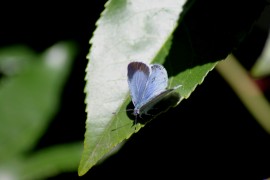
-7855917727.jpg)
-1617715293.jpg)

-8817333444.jpg)
-2805048301.jpg)
-7039488092.jpg)
-7889736811.jpg)
-6241892017.jpg)
-3873213478.jpg)
-7075085658.jpg)
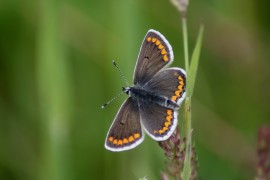
-1683485507.jpg)
-3152021886.jpg)
-2888649725.jpg)
-1578590744.jpg)
-9644043934.jpg)
-8689094884.jpg)
-3845217199.jpg)
-2772195977.jpg)
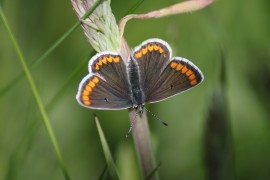
-798627571.jpg)
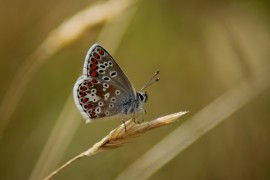
-1968512809.jpg)
-7291198815.jpg)
-2313415184.jpg)
-7723175715.jpg)
-5434966366.jpg)